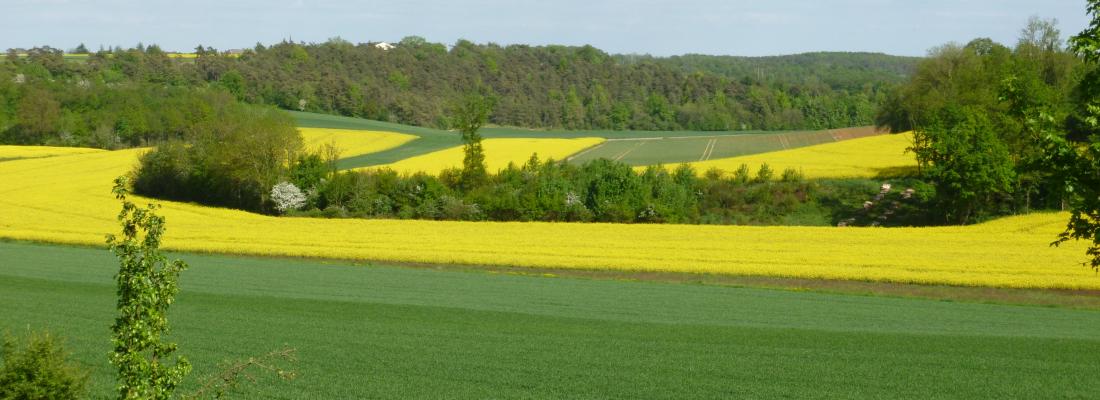Agroecology Reading time 3 min
Impacts of the European Green Deal on the agrifood sector
Published on 15 February 2024

The European Green Deal is attempting to tackle the negative climate, environmental and public health impacts of the European agrifood system in a comprehensive way by considering the entire food chain through a farm-to-fork approach. More specifically, this approach aims to develop more sustainable agricultural systems through the adoption of agroecological practices (lever 1), reduce food loss and waste (lever 2), and promote healthier and more sustainable diets (lever 3). While the first lever has been the subject of a great deal of research (which has mainly sought to characterize the economic effects), the market and non-market impacts of the other two levers have not been studied as much. With this in mind, INRAE researchers analysed two types of impacts – economic (production, trade, consumption, prices, farm receipts and food expenditure) and non-market (greenhouse gas emissions, biodiversity damage and nutritional indicators) – of the three levers, considering them both separately and when implemented together. An original model of the European agrifood sector was calibrated using data for three years 2018, 2019 and 2020 to perform the simulations.
While the priorities advocated by the European Green Deal seem justified from an environmental and public health point of view, the resulting economic challenges should not be trivialized. The simulation outcomes also showed that the market and non-market impacts are remarkably different depending on whether a single lever is activated or all three levers are implemented concurrently.
While the economic impacts of the agroecology lever alone are relatively moderate and could be managed as part of a gradual transition, they come at the cost of low climate and ecological benefits, namely through emissions and damage leakages to non-EU countries as a result of increased European imports. This lever alone would lead to a moderate increase in food expenditure and would have an indeterminate impact on the incomes of farmers, depending on the relative degree of price increases and production volume decreases.
Simultaneously using all three levers provided for in the European Green Deal would considerably increase the climate, environmental and nutritional benefits, thus confirming, from this standpoint, the validity of taking action across the entire food chain. European consumers would see economic benefits from this scenario, provided that consumer behaviour changes substantially. The increased food expenditure resulting from higher prices due to the implementation of agroecological practices could thus be offset if people increase their consumption of plant-based protein and reduce their consumption of animal-based products. However, the livestock sector would be very adversely affected due to the double effect of a negative quantity effect and a negative price effect. The food transition would result in a transfer of value from the animal to the plant sectors.
Major points of tension
The researchers analysed the main critical issues that would arise for the agrifood sector following implementation of the European Green Deal.
They looked at three issues related to lower European production stemming from the development of agroecological practices: alternatives to extensifying European agriculture, agroecological farming yields, and the tensions that could arise from the drive to develop agroecological farming and organic farming systems simultaneously.
With regard to European food security, the researchers examined ways of reducing the rise in food imports and the associated pollution leakage in non-EU countries. They also addressed the issue of access to healthy, balanced diets for all European consumers, particularly in a context of significant social differences in eating habits and practices.
The two most complex aspects relate to changes in food consumption patterns and the future of livestock production. For the first issue, the researchers analysed the demand-side public policies that could shift consumption patterns to promote better public health and protect the environment. The researchers underscore the need to act not only at the final consumption stage to avoid a massive increase in imports, but also concurrently on the quality of the food on offer. With regard to the second issue, the scale of the shock means that the animal sectors and the regions where livestock farming is the dominant agricultural activity will not be able to adapt on their own. Strong, targeted public support will be needed.
The researchers conclude by noting that all these difficulties need to be properly characterized by considering the food system as a whole to enable a public debate that recognizes both the need for far-reaching changes to meet environmental and public health challenges and the scale of the economic and social issues that these changes present.
[1] The EU wants to make Europe the first climate-neutral continent in the world, with a commitment under the European Climate Law to reduce greenhouse gas emissions by 55% by 2030 compared to 1990 levels. https://commission.europa.eu
References
- Guyomard H., Soler L.-G., Détang-Dessendre C., Réquillart V. (2023). The European Green Deal improves the sustainability of food systems but has uneven economic impacts on consumers and farmers. Communications Earth & Environment 4, article number: 358, Published: 7 October 2023. doi.org/10.1038/s43247-023-01019-6
Guyomard H., Soler L.-G., Détang-Dessendre C. (2024). La transition du système agro-alimentaire européen dans le cadre du Pacte Vert : mécanismes économiques et points de tension. Revue de l’OFCE, 183. https://www.ofce.sciences-po.fr/pdf/revue/5-183OFCE.pdf
